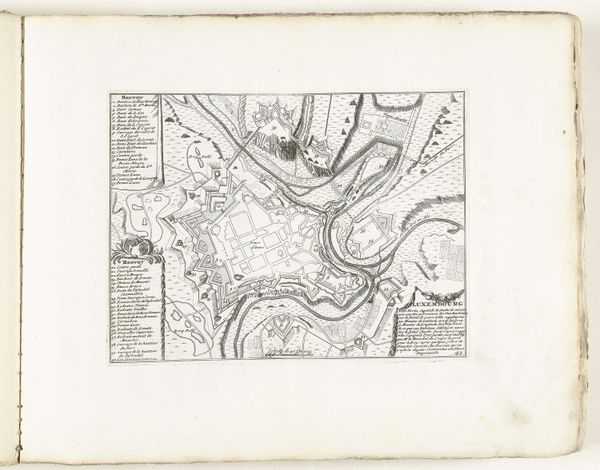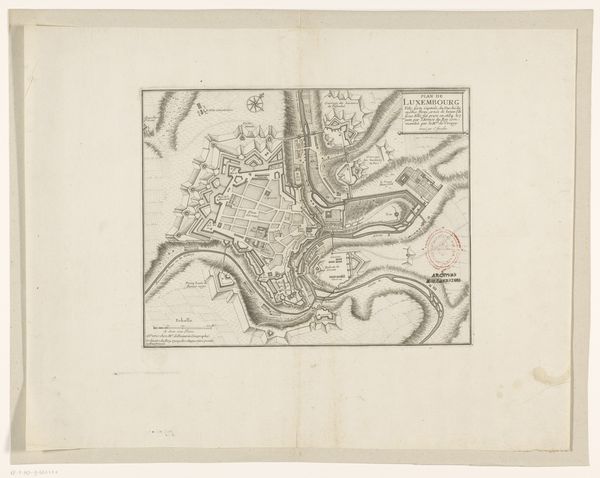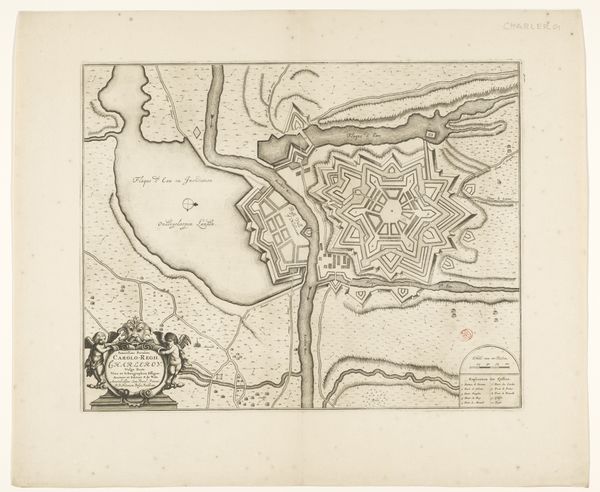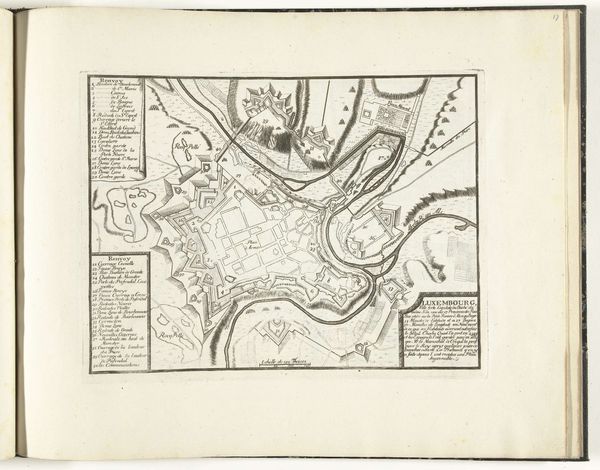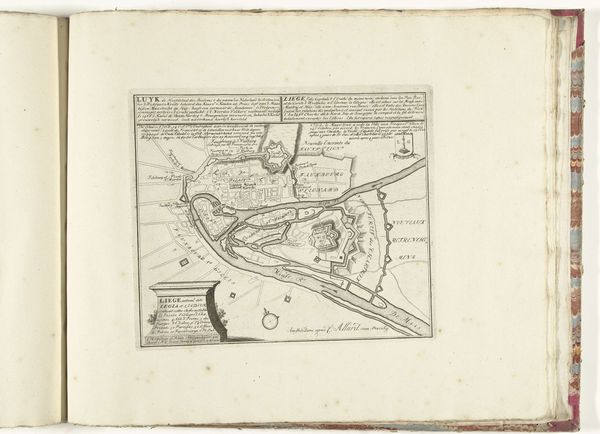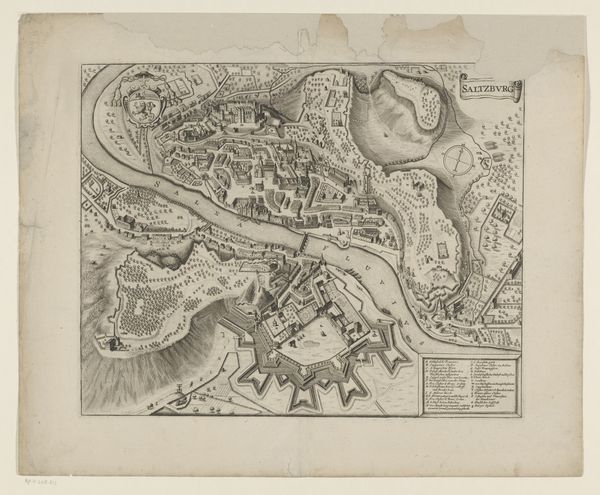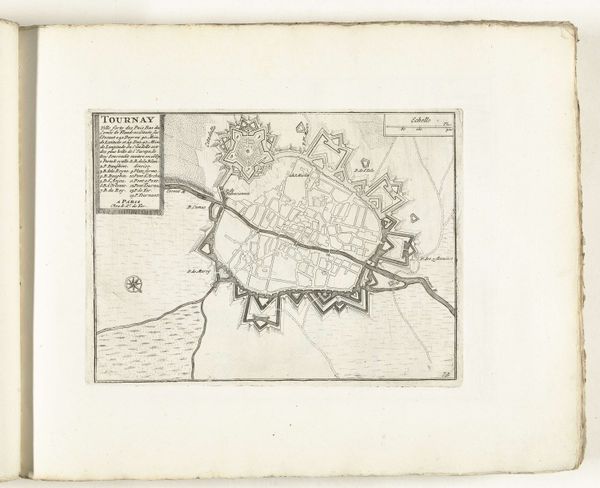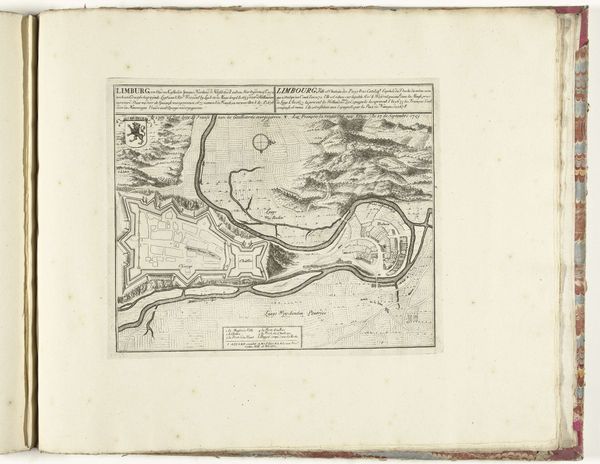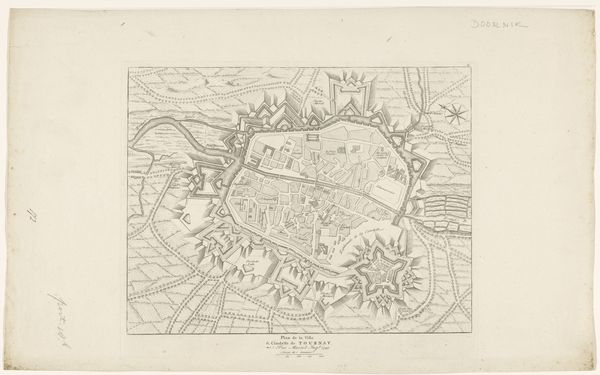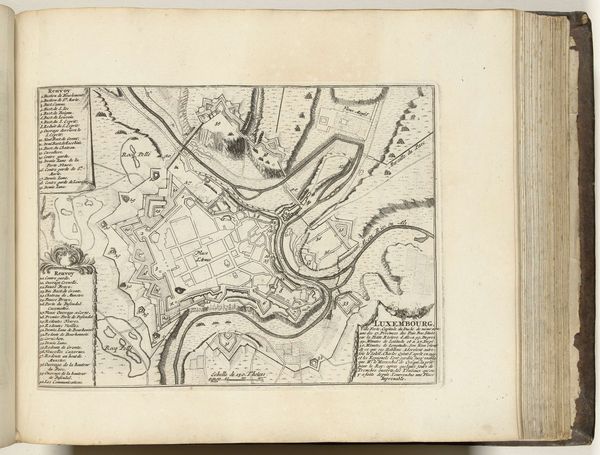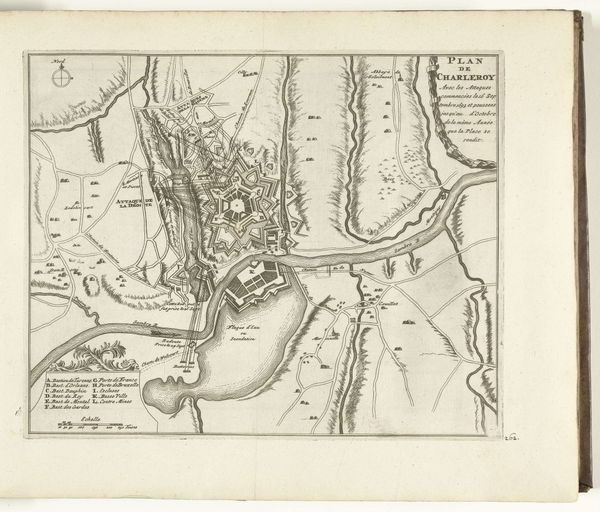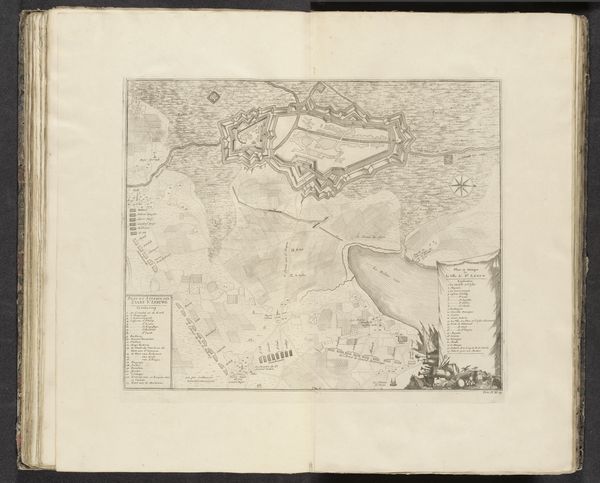
drawing, print, paper, ink, engraving
#
drawing
#
baroque
# print
#
old engraving style
#
paper
#
ink
#
geometric
#
line
#
cityscape
#
engraving
Dimensions: height 212 mm, width 274 mm
Copyright: Rijks Museum: Open Domain
Editor: So, this is "Vestingplattegrond van Luxemburg," a drawing from between 1696 and 1705 by an anonymous artist. It’s an engraving made with ink on paper. The first thing that strikes me is the sheer detail—it’s like a tiny, intricate world captured in lines. What can you tell me about it? Curator: It’s funny, isn’t it? How we turn cities into these abstract blueprints, distilling life down to lines and angles. What I find fascinating here is the performative aspect. It's not just a map; it’s a display of power. Imagine someone, back then, poring over this, planning strategies. Editor: Like a game of chess being played on the landscape itself. But, beyond the strategy, is there something else to it? Curator: Absolutely. It's an act of claiming. To map something is to possess it, in a way. And there’s an element of beauty here too, wouldn’t you agree? The precision of the lines, the way the space is organized… It almost transforms a tool of war into a piece of art. But this geometric precision does not let me feel much empathy about those times. It speaks to a period obsessed with order, where everything, even cities, could be controlled. It might not reflect accurately what cities represent today... What do you think? Editor: It makes me wonder about what's not included—the lives within those walls. You only get a sense of structures, of fortifications, but not of the bustling reality. This has been fascinating to consider. Curator: Yes, art often operates that way, inviting us to look both at what is there and what remains unseen or unsaid, a paradox if you want. It opens your imagination, and maybe that is its most important aspect.
Comments
No comments
Be the first to comment and join the conversation on the ultimate creative platform.
